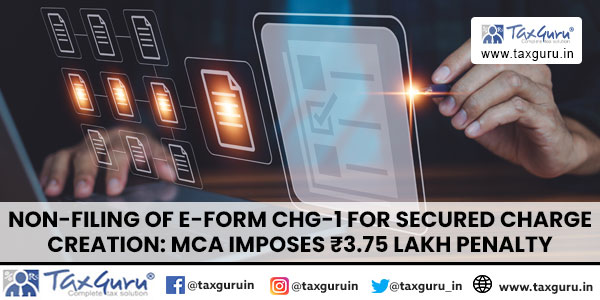Dr. Sanjiv Agarwal
 While the Finance Minister has said that his priorities were directed towards making taxes moderate, payment simple and collection of taxes easy for the tax collectors, the changes proposed result in higher indirect tax collection by over Rs. 11000 cores. He admits that there has been a healthy growth in indirect taxes in 2010-11 and as such peak tax rates have not been tinkered with.
While the Finance Minister has said that his priorities were directed towards making taxes moderate, payment simple and collection of taxes easy for the tax collectors, the changes proposed result in higher indirect tax collection by over Rs. 11000 cores. He admits that there has been a healthy growth in indirect taxes in 2010-11 and as such peak tax rates have not been tinkered with.
On GST, while he has been non committal on timing and roll out, it is in his mind to bring in constitutional amendment bill in the current session of the Parliament. Over all, the amendments are targeted towards moving close to harmonise with GST regime in the future.
Highlights of Budget Proposals Relating to Indirect Taxes
Tax Receipts at a Glance (Rs in crores)
| Tax | 2010-11 (BE) | 2010-11(RE) | 2011-12 (Targets) |
| Customs | 115000 | 131800 | 151700 |
| Central ExciseDuty | 132000 | 137778 | 164116 |
| Service Tax | 68000 | 69400 | 82000 |
| Gross Tax Revenue | 746651 | 786888 | 932440 |
| Tax Revenue (Net to centre) | 682212 | 783833 | 789892 |
Indirect Tax Management
The overall approach to indirect tax proposals is aimed at taking forward the path of fiscal consolidation without adversely affecting economic growth, achieve improvement in tax – GDP ratio by expansion in tax base, removal of exemptions, moderation of tax rates, reduce complexities in tax system and encourage voluntary compliance. To meet these ends, budget mainly proposes as under –
Central Excise:
- Enhancement in the merit rate of Central Excise from 4% to 5%
- Expansion of the tax base through
- Imposition of a nominal duty of 1 % ad valorem on about 130 items that were hitherto exempt or chargeable to nil rate of duty without CENVAT credit
- Imposition of mandatory excise duty of 10% on ready made garments bearing or sold under a brand name
- Rationalization of rate structure on paper and availability of CENVAT credit to ship-breaking units )
Customs:
- Enhancement in export duty on iron ore at a unified rate of 20% for both lumps and fines
- Rationalisation of customs duty rates of 2%,2.5% and 3% to the median rate of 2.5% as well as the rate structure for aircraft
Service tax:
- · Imposition of service tax on a few more service categories
- Rationalisation in the scope of many existing service categories such as insurance, banking and financial services, health services, commercial training and coaching, clubs or associations etc.
- Rationalisation in the valuation provisions and import rules; and
- Ratonalisation of the CENVAT Credit scheme provisions especially with regard to the apportionment of credit between dutiable/taxable and exempt goods or services.
Union Budget 2011- 12 – Highlights
- Budget 2011-12 to serve as a transition towards a more transparent and result oriented economic management system in India.
- Gross Domestic Product (GDP) estimated to have grown at 8.6 per cent in 2010-11 in real terms. Economy has shown remarkable resilience.
- Indian economy expected to grow at 9 per cent with an outside band of +/- 0.25 per cent in 2011-12.
- Proposal to introduce the Public Debt Management Agency of India Bill in the next financial year.
- Direct Taxes Code (DTC) to be finalised for enactment during 2011-12. DTC proposed to be effective from April 1, 2012.
- Areas of divergence with States on proposed Goods and Services Tax (GST) have been narrowed. As a step towards roll out of GST, Constitution Amendment Bill proposed to be introduced in this session of Parliament.
- Significant progress in establishing GST Network (GSTN), which will serve as IT infrastructure for introduction of GST.
- Share of manufacturing in GDP expected to grow from about 16 per cent to 25 per cent over a period of 10 years. Government will come out with a manufacturing policy.
- Self assessment to be introduced in Customs to modernize the Customs Administration
- Five fold strategy to be put into operation to deal with the problem of generation and circulation of black money.
- Enforcement Directorate strengthened three fold to handle increased number of cases registered under amended Money Laundering Legislation.
- Various IT initiatives taken for efficient tax administration. These include e-filing and e-payment of taxes, adoption of ‘Sevottam’ concept by CBEC and CBDT, web based facility for tax payers to track the resolution of refunds and credit for pre-paid taxes and augmentation of processing capacity.
- Under Mission mode projects, funds released to 31 projects received from States/ UTs for computerisation of Commercial taxes. This will allow States to align with roll out of GST.
- Three more benches of Settlement Commission to be set up to fast track the disposal of cases.
- Central Excise Duty to be maintained at standard rate of 10 per cent.
- Reduction in number of exemptions in Central Excise rate structure.
- Nominal Central Excise Duty of 1 per cent imposed on 130 items entering in the tax net.
- Peak rate of Custom Duty held at its current level.
- Scope of exemptions from Excise Duty enlarged to include equipments needed for storage and warehouse facilities on agricultural produce.
- Basic Custom Duty reduced for various items to encourage domestic value addition vis-à-vis imports, to remove duty inversion and anomalies and to provide a level playing field to the domestic industry.
- Standard rate of Service Tax retained at 10 per cent, while seeking a closer fit between present regime and its GST successor.
- Hotel accommodation in excess of ` 1,000 per day and service provided by air conditioned restaurants that have license to serve liquor added as new services for levying Service Tax.
- Tax on all services provided by hospitals with 25 or more beds with facility of central air conditioning.
- Service Tax on air travel both domestic and international raised.
- Services provided by life insurance companies in the area of investment and some more legal services proposed to be brought into tax net.
- All individual and sole proprietor tax payers with a turn over upto ` 60 lakh freed from the formalities of audit.
- To encourage voluntary compliance the penal provision for Service Tax are being rationalised. Similar changes being carried out in Central Excise and Custom laws.
- Proposals relating to Service Tax estimated to result in net revenue gain of 4,000 crore.
- Proposals relating to Direct Taxes estimated to result in a revenue loss of 11,500 crore and those related to Indirect Taxes estimated to result in net revenue gain of ` 11,300 crore.
On Goods & Service Tax (GST)
- DTC and GST to mark water shed.
- Decisions on GST to be taken in concert with the states.
- Areas of divergence between centre and states narrowed.
- Constitutional Amendment Bill likely to be introduced in current session
- Drafting of model legislation for central and state GST underway
- Establishment of IT infrastructure in process (GST network)
- NSDL selected as technology partner for GST.
- Tax rates maintained at same level of 10% to stay on course towards GST
- Certain central excise rates changed to prepare the ground for transition to GST by reducing number of exemptions.
- Nominal central excise duty of 1 % imposed on 130 items, no cenvat credit allowed on such items.
- In service tax, proposals aim to achieve a close fit between the present service tax regime and GST.
Customs Duty
- Basic customs duty rates of 2% , 2.5 % and 3% aligned at median rate of 2.5%
- Certain changes in rates of duty by amendment of tariff rates or by way of notifications
- Scheme of self assessment introduced for self assessment of duty on import or export of goods
- Section 28 amended to bring clarity and to harmonise demand period in normal cases to one year.
- Adjudicating authority allowed to release seized goods
- Packaged software which is not required to bear retail sale price exempted from so much of additional duty of customs as is equivalent to duty payable on that portion of value which represent consideration paid / payable for the transfer of the right of its use.
Central Excise duty
- Tariff changes to come into immediate effect
- Concessional rate of excise duty of 4% increased to 5% . Excise duty of 1% without cenvat facility imposed on 130 specified items which were till now exempt or charged to nil duty.
- Rate of duty on cement and cement clinker rationalized for mini cement plant and others. Although the price slabs are being retained, the rates of duty are being converted to mixed rates i.e. ad valorem + specific rates along with some reduction. For the purpose of the ad valorem component, the value would no longer be the retail sale price but the transaction value determined under section 4 of the Central Excise Act, 1944. Similarly, rates of duty applicable to cement manufactured by mini-cement plants have been revised from specific rates to either ad valorem or ad valorem+ specific rates with some reduction. The rate of duty on bulk cement (i.e. other than packaged form), whether manufactured in a mini-cement plant or not, is being unified at 10% ad valorem.
- Penal provisions rationalized. A new category of cases carved out in respect of which period of limitations would be 3 years and attract general penalty of 50% of duty. Waiver of SCN and conclusion of proceedings available if tax and interest paid before SCN.
- Rate of interest revised w.e.f. 1.4.2011 to a uniform rate of 18% p.a. for section 11 AA and 11 AB.
- Joint / Additional Commissioner empowered to carry out search of any premises or to authorize CEO to do so.
Ready made garments and made up articles of textiles when they bear or are sold under a brand name will attract a excise duty of 10 percent. In case of job work, it has been prescribed that the liability to pay duty and comply with the procedures shall be on the person on whose behalf the goods are manufactured by the job workers.
It may be noted that all changes in rate of duty have come into effect from 28th February, 2011 midnight.




























Pls send the excise duty rate in Maharashtra all product
sir,
pls send mr excise duty rate on sales of induction cooktop.
thanks
manoj sharma
9899285991
Mail amendment of Excise, Service Tax and Customs
PLEASE SEND ME AMENDMEND OF INDIRECT TAXES TILL DATE ON MY MAIL ID.
hike in cenrral excise duty may affect the garment factory workers as it is it is in down trend
Please send the Central Excise and Customs A.Y. 2011-12 Notes on mail id